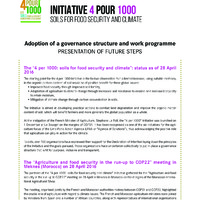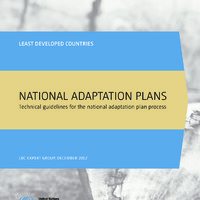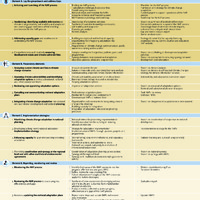Recherche
4 items
Adoption of a governance structure and work programme presentation of future steps
Adoption of a governance structure and work programme PRESENTATION OF FUTURE STEPS
National adaptation plans technical guidelines for the national adaptation plan process
The Least Developed Countries Expert Group (LEG) was established in 2001 to support least developed countries (LDCs) in addressing the adverse impacts of climate change. Since that time, the LEG, in accordance with its original mandate, has provided technical guidance and advice to LDCs on the preparation and implementation of their national adaptation programmes of action (NAPAs). Through its new mandate, received at the sixteenth session of the Conference of the Parties (COP) in 2010 in Cancun, Mexico, the LEG now also provides technical guidance and advice on: the revision and update of NAPAs; the strengthening of gender considerations and considerations regarding vulnerable communities; the integration of NAPAs into development planning; the identification and implementation of medium- and long-term adaptation; and the implementation of the LDC work programme. Furthermore, the LEG also provides technical guidance and support to the national adaptation plan (NAP) process. These technical guidelines have been developed by the LEG, with input and feedback from the Global Environment Facility (GEF) and its agencies, and experts from other organizations,to support the NAP process, following a request by the COP. They offer a range of options for dealing with each element of the NAP process, and are based on the guiding principles of the NAP process. The NAP process was established to build on the rich experiences of the LDCs in addressing adaptation through the NAPAs, and through it, to address medium- and longterm adaptation. The process aims to assist LDCs to reduce their vulnerability to the impacts of climate change, by building adaptive capacity and resilience, and by facilitating the integration of climate change adaptation into development planning. As laid out in the initial guidelines that were adopted at COP 17, the technical guidelines are framed around the four elements of the NAP process: laying the groundwork and addressing gaps; preparatory elements; implementation strategies; and reporting, monitoring and review. The technical guidelines are not prescriptive, and countries can decide on the specific steps for their national process. They are developed in a way that seeks to enhance the coherence of adaptation and development planning within countries, rather than duplicating efforts undertaken or underway. They are intended to facilitate country-owned, country-driven action, that seeks to harness and build upon national-level capacity, with support from various partners, as appropriate. They are designed in a way that allows countries to monitor and review it on a regular basis, and update their NAPs in an iterative manner. These technical guidelines will assist the LDCs in comprehensively addressing adaptation in a coherent and strategic manner. They will assist countries to develop clearly defined adaptation programmes that countryowned, country-driven, and that catalyze action beyond the implementation of adaptation projects. The LEG recognizes that LDCs will continue to rely on the active support by the LEG and other partners, and stands ready to provide any support regarding the application of these guidelines, and on the overall NAP process.
Table of steps, building blocks and sample outputs under each of the four elements of the nap process
TABLE Of STEPS, BuILDING BLOCkS AND SAMPLE OuTPuTS uNDER EACh Of ThE fOuR ELEMENTS Of ThE NAP PROCESS
The consortium 4 ‰ : a light and effective organisation to build together the initiative
The consortium 4 ‰ : a light and effective organisation to build together the Initiative



